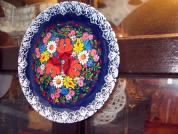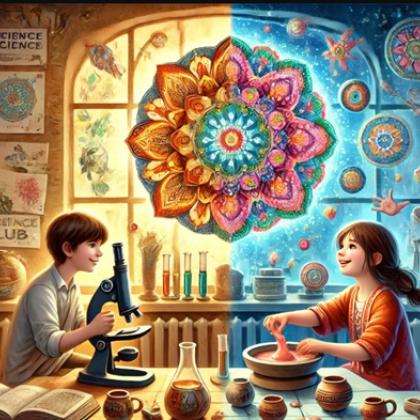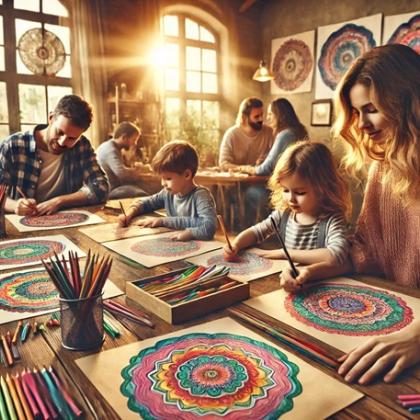Autor: Zuzana Řezáčová Lukášková, zveřejněno 21. 9. 2019
Mandala is everywhere around us. It is a cross-cultural symbol of harmony and unity. Mandala is a space for self-discovery.
is a word originating from ancient Indian ceremonial language Sanskrit, meaning a circle, a curve or a magic arch.
It would be possible to talk about mandala for hours however, it is better to experience it; for example, in a mandala drawing course. You can also learn more about mandalas in our online courses.
The word has been brought to our language by C. G. Jung who, by doing so, connected the Eastern philosophy with the Western psychology. Essentially, and in the most explicit way, mandala means a round image with a center and inwards (and outwards) oriented symmetric shapes. Nevertheless, mandala does not have to be round as shown by for example, the Indian amber; a circle placed in a square (the connection of the divine and the earthly).
It could be said that mandala has surrounded humans since ever. It has been present in all ages, cultures, and geographical areas. It is as old as the Sun itself and in fact, even the Sun, the stars, and the Earth... are all mandalas.

Mandala is a flower, an Indian dream catcher, a rosette window in a gothic church, an Egyptian pyramid, a round table inlaid by special wood, a meditative image of a buddhist monk, a fair pie from Haná, a healing Native American sand image, a circle on a water surface caused by rain, spiral labyrinths on a cathedral floor, decorated plates, Celtic ceremonial circles, a rotunda, all the round decorative patterns (on jewelry, carpets, pictures, etc.)...
The power hidden in the center of a mandala has been already known and used by many ancient peoples. Even today we can utilize this strange force in both the creation of a mandala and in relaxation with it. The effects of drawing and concentrating on a color is known to all of us from color books. Mandala can be such a color book for children as well as adults. However, thanks to its central arrangement it can become much more than just color pencil-based relaxation tool. It can be a therapeutic instrument, a mean for self-discovery, a companion on the journey to our own center; the place of peace, harmony and love.
Emotional processing – mandalas allow us to get in touch with our feelings and emotions and they enable us to process them properly.
Calming effect – the circle image with harmoniously organized elements works as a model for the soul, which is calming down by trying to obtain a similarly balanced shape.
Energizing effect - the time you spend with yourself in your own rhythm is healing on its own. When you allow yourself to dive into mandala creation, you will live by the present moment where the time is seemingly faster and your body gains more power and energy.
When you look at any mandala you will realize it is very dynamic. Focusing your eyes on the center, the picture will “come to life”. The colors become to blend, mix, and spin; like if they were dancing! If you watch the dance for a while you will notice your breath and pulse is slowing down and that your body tension is being released...

